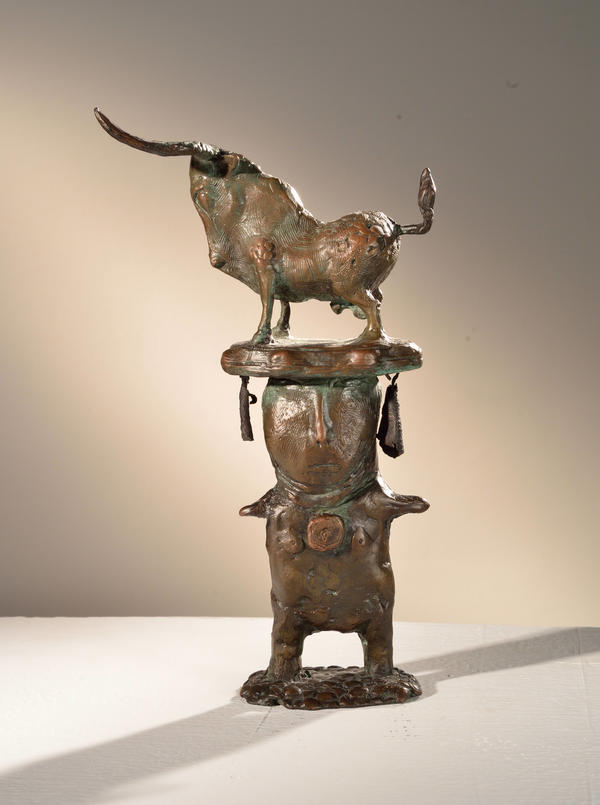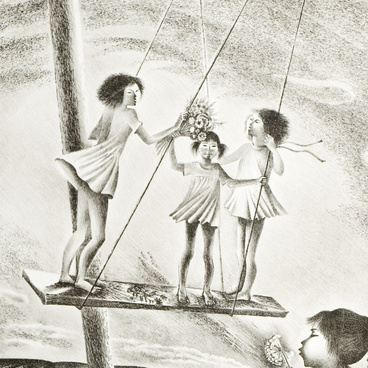wrote Zinaida Ivanova-Unarova, a fine art expert.
Yakut artist Alexander Manzhuriev created his 'Celestial Dance' in 2012. For this sculpture, he chose a complex multilayered composition: at the bottom, he placed a shaman’s figure, and at the top of his head, he put a tambourine on which a bull stands. The artist used bronze as his work material and applied patina to its surface.
'Celestial Dance' unites three Yakut folklore characters connected with the divine world. Manzhuriev purposefully breaks the proportions for the sake of expressiveness: he made the shaman’s head long, while the rest of his body, as well as the torso of the bull, are small. That is why the characters of the sculpture seem grotesque and funny, and each detail of the composition gains a different, symbolic meaning.
A shaman was considered to be a mediator between people and the world of spirits. People asked shamans to cure diseases, to help them in their hunt, to give them a good harvest or many children. To communicate with the divine world, shamans went into a trance.
Usually, shamanic rituals were accompanied by loud singing and sounds. Their necessary attribute was a drum: it was considered to help the participants in the ritual to go into a trance and get in contact with spiritual worlds.
The bull standing on top of the drum symbolizes the cold. The Sakha people associated it with the other world, because it was what brought people hunger and cold. The Yakuts believed that when the bull’s horns grew, the cold got stronger, and when they broke, it eased off.
Manzhuriev’s works are folkloric in their content and innovative in style: they diverge from Yakut traditions. The artist strives to unveil the sacred meaning of shamanism, folk legends and beliefs through his own artistic language. That is why researches consider Manzhuriev to be the founder of a new movement in modern Yakut art.


